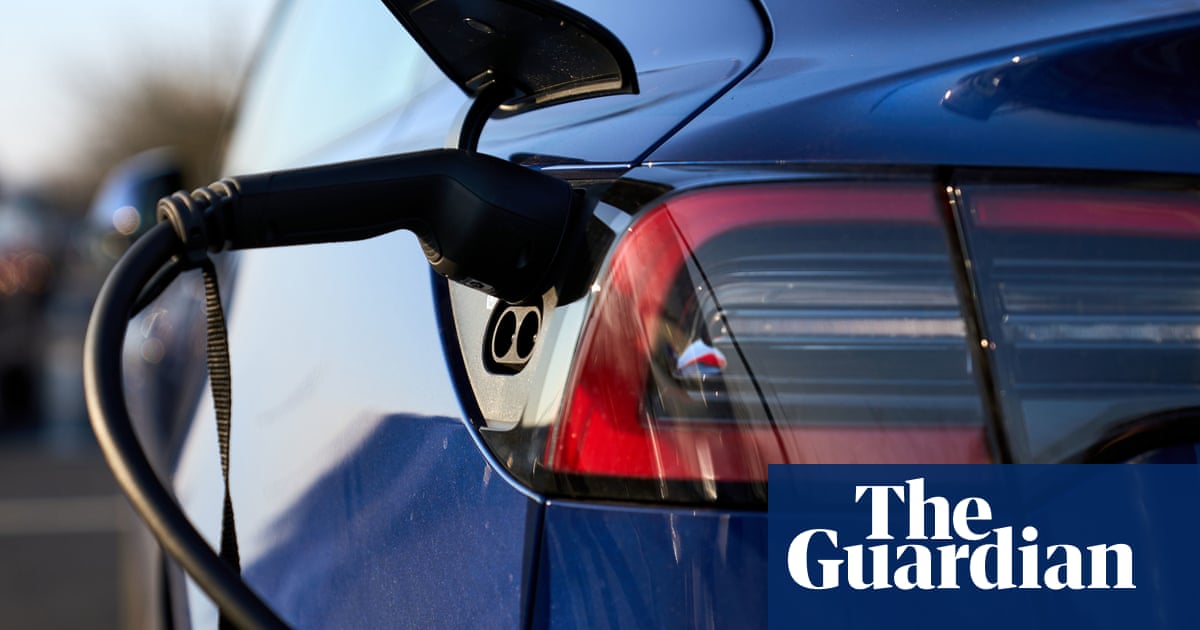
Weak EU vehicle emissions targets could allow Europe’s biggest carmakers to produce millions more petrol and diesel cars than necessary up to 2030 in a “wasted decade” for cutting carbon pollution, according to a report.
Analysis of car industry sales plans for electric vehicles shared exclusively with the Guardian by Transport and Environment (T&E), a thinktank and campaign group, showed that manufacturers could hit their 2030 EU carbon emissions targets with four years to spare.
However, the report warned that manufacturers could stick closely to their minimum requirements, as has been the case in recent years – opening up the potential for the industry to sell their more profitable petrol and diesel marques.
Based on the car industry’s publicly stated commitments for EV production, the study showed there was a gap between what could be achieved and where sales volumes would be if they are kept in line with the EU emissions rules.
Some vehicle makers could wholeheartedly embrace an electric revolution. But T&E said leaving the rules unchanged would jeopardise the sale of 18m battery-powered models and result in 55m extra tonnes of CO2 pollution – more than the annual emissions of all the cars in Spain.
T&E said carmakers got easier targets if they sold heavier vehicles, driving up sales of high-emitting SUVs and plug-in hybrid models, which – when not charged – could pollute more than fossil fuel engines.
The surge in SUV sales has meant that average engine emissions from three carmakers are actually higher than they were five years ago – even as they simultaneously green their fleets by making new electric cars. They were: Jaguar Land Rover, Volvo and Mercedes-Benz owner Daimler – all of which last week signed a pledge at Cop 26 to only sell zero-emissions cars by 2040.
Alex Keynes, the clean vehicles manager of T&E, said: “The electric vehicle boom has been driven by EU clean car rules but will falter unless lawmakers step in. Now is the time to set properly ambitious targets if we are to avoid a wasted decade in the race to decarbonise cars.”
Under the existing rules, carmakers must reduce emissions relative to 2021 levels by 15% by 2025, and by a proposed 55% by 2030 – a bigger cut than previously planned. However, T&E argued that the 55% cut is still too lenient, arguing that emissions should fall by 80% by 2030 – a level that would force carmakers to accelerate from their current plans.
The European Automobile Manufacturers’ Association (ACEA) has said that even the 55% carbon reduction target would be “very challenging” and warned that bans on “a single technology” would not be rational, in part because of meagre electric charger provision in some countries.
The emissions rules do not include the UK, where carmakers must report emissions separately following Brexit. However, the UK has copied nearly identical rules that came into force on 1 January, and about half of all cars built in UK factories are exported to the EU.
A spokesman for Daimler said Mercedes-Benz would be ready to go all electric at the end of the decade, where market conditions allowed. He added that the UK had seen “an increase in customer demand for SUVs in recent years”.
A spokesman for Jaguar Land Rover said electrification was at the heart of its new “electric-first” strategy, with battery versions of all models available by 2030.
Volvo said emissions data showed it was “one of the industry leaders in reducing CO2 emissions from the cars it sells” because of growing electric and plug-in hybrid sales. The carmaker plans to only sell electric cars by 2030 and to be “climate-neutral” by 2040.
A spokesperson for ACEA said manufacturers were fully committed to bringing CO2 emissions down to zero and supporting the EU’s goal of reaching climate neutrality by 2050.
They said that car industry investment in EVs was outpacing funding for charging infrastructure, warning that failure to increase spending on the network could lead to electric car uptake stalling.
“The auto industry’s efforts must be met with the same level of ambition by the EU and its member states. It is essential that all players work together to create the right supportive framework that will drive consumers towards cleaner mobility options, and thus achieve our common goal of reaching climate neutrality in Europe.”












